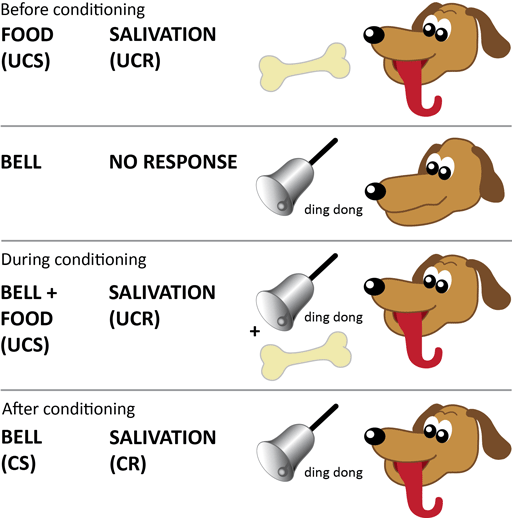
In order to do this he first showed them food, the sight of which caused them to salivate. In these experiments, Pavlov trained his dogs to salivate when they heard a bell ring. Psychologist Ivan Pavlov and his experiments on dogs. One of the best-known examples of classical conditioning can be found with the Russian PAVLOV’s CLASSICAL CONDITIONING (1849-1936)Ĭlassical conditioning is a term used to describe learning which has been acquired through experience. Now we will discuss theory of behaviorism of PAVLOV’s Classical Conditioning Theory. In addition, constructivism views learning as a process in which the learner actively constructs or builds new ideas or concepts. Cognitive theories look beyond behaviour to explain brain-based learning. Behaviourism focuses only on the objectively observable aspects of learning. The three main categories or philosophical frameworks under which learning theories fall are behavioural, cognitive, and constructivism.

Learning theories have two chief values according to Hill (2002). For instance, providing consistent reassurance and support may help a child who is anxious about reading aloud start to feel more calm and comfortable.A learning theory is an attempt to describe how people and animals learn, thereby helping us understand the inherently complex process of learning. Teachers can use classical conditioning to help children overcome some anxiety-provoking contexts. For instance, if a particular bell tone is the conditioned stimulus, similar sounding bell tones can elicit the same response. Once a conditioned response has been created, it can tend to emerge as a response to other stimuli which appear similar. For a conditioned response to be maintained, the unconditioned stimulus must be re-introduced occasionally to ‘top up’ the desired conditioned response. ExtinctionĮxtinction (the opposite of acquisition) occurs when a conditioned response weakens or ceases to exist. This must then be repeatedly reinforced to ensure strong learning takes place. AcquisitionĪcquisition requires a neutral stimulus to become linked with an unconditioned stimulus. The key elements of classical conditioning: 1. That means the subject has learned to produce the CR when triggered by the CS – which was previously just a neutral signal. At this final stage, the response has now become a CR (conditioned response). One the UCS and the CS are connected, the CS alone will trigger a response. Once this starts to happen, the neutral stimulus is transformed into a CS (conditioned stimulus) because the subject has now become conditioned to respond to the CS as if it were the natural UCR. Soon, the neutral stimulus becomes linked with the UCS. Next, a neutral stimulus is repeatedly introduced alongside the UCS. So at this stage, there is a UCS (unconditioned stimulus) linked to a UCR (unconditioned response) which occurs naturally. The action of classical conditioning upon a subject is a three-phase process: Phase 1: Pre-conditioned stateĬlassical conditioning demands a naturally occurring stimulus which will induce an automatic response. Once the sound of the neutral stimulus became linked to the stimulus present in the environment (food arriving), it soon became possible to induce salivating just by sounding the neutral stimulus. For instance, Pavlov’s dogs heard a tone (neutral stimulus) followed by salivating (naturally occurring reflex) in response to the arrival of food.


For learning to occur, there must also be a ‘neutral stimulus’ which is then followed by a naturally occurring reflex. Ivan Pavlov Theory: Classical Conditioningįirst discovered by Russian physiologist Ivan Pavlov (1849-1936), classical conditioning is a learning process governed by associations between an environmental stimulus and another stimulus which occurs naturally.Īll classical conditioned learning involves environmental interaction.


 0 kommentar(er)
0 kommentar(er)
